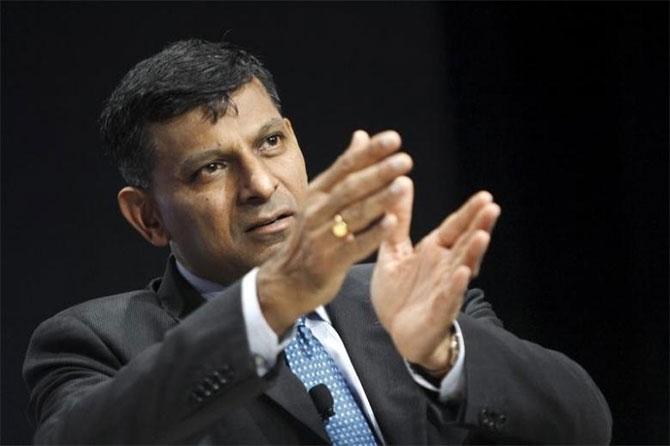Biased: SBI on Rajan's Hindu rate of growth remarks
March 07, 2023 14:42

A State Bank of India research report on Tuesday dismissed arguments that India is dangerously close to Hindu rate of growth saying such statements are "ill-conceived, biased and premature" in the wake of the recent GDP numbers and the available data on savings and investments.
"Interpretations of GDP growth based on noisy quarterly numbers is a game of smoke and mirror," said the SBI report 'Ecowrap'.
The report comes within days of former Reserve Bank Governor Raghuram Rajan saying that India is "dangerously close" to the Hindu rate of growth in view of subdued private sector investment, high interest rates and slowing global growth.
Rajan said that sequential slowdown in the quarterly growth, as revealed by the latest estimate of national income released by the National Statistical Office (NSO) last month, was worrying.
Hindu rate of growth is a term describing low Indian economic growth rates from the 1950s to the 1980s, which averaged 3.5 per cent. The term was coined by Raj Krishna, an Indian economist, in 1978 to describe the slow growth
"India's quarterly Y-o-Y GDP growth has been in a declining trend in FY23 sequentially, prompting arguments that India's growth is reminiscent of a pre - 1980 Raj Krishna coined growth rate," the report said.
Apart from the fact that, quarterly growth numbers are "noisy and should be best avoided for any serious interpretation (on an average, India's GDP growth has witnessed Rs 2 lakh crores upward revision for the 3 year ended FY23), "we find such argument ill-conceived, biased and premature at its best when weighing the recent GDP numbers against the available data on savings and investments."
The investment and savings data for the past decade reveals interesting points, said the report authored by Soumya Kanti Ghosh, Group Chief Economic Adviser, State Bank of India.
Gross capital formation (GCF) by the government touched a high of 11.8 per cent in 2021-22, up from 10.7 per cent in 2020-21.
"This also had a domino effect on private sector investment that jumped from 10 per cent to 10.8 per cent over the same period," it said.
In fact, Ecowrap added that the trends in GCF to gross output ratio or the plough back of funds for creation of fresh capacity shows that for public administration the ratio attained fresh peak in 2021-22 owing to the emphasis on capital expenditure in recent budgets.
At the aggregate level, gross capital formation is supposed to have crossed 32 per cent in 2022-23, the highest level since 2018-19.
According to the report, in 2021-22, gross savings have risen to 30 per cent from 29 per cent in 2020-21.





 © 2024 Rediff.com -
© 2024 Rediff.com -